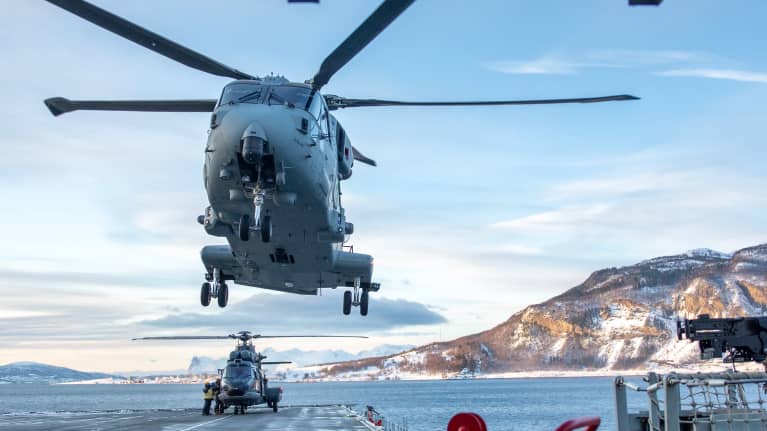Finland's journey towards joining the Nato alliance no longer faces any foreseeable obstacles, following ratification by the Turkish parliament late on Thursday. However, the process still involves a series of formalities that could last weeks, even months, to complete.
Finnish President Sauli Niinistö set expectations last month when he said that Finland will likely become a fully-fledged Nato member by the time the alliance stages its next summit in Vilnius, Lithuania from 11-12 July.
Turkey's MPs voted 276-0 in favour of ratifying Finland's application, making it the last of Nato's 30 member states to do so.
Finland next needs Turkish President Recep Tayyip Erdogan to give Thursday's vote his seal of approval, which Erdogan has two weeks to do before the legislative deadline closes.
Once the acceptance letters from all member states arrive at the US State Department in Washington DC, the alliance's Secretary General Jens Stoltenberg will then formally invite Finland to join the North Atlantic Treaty Organisation.
This phase will also involve a Finnish representative travelling to Washington. There is no information as yet as to when that will happen and who will represent Finland.
The invitation letter will need to be signed by Minister for Foreign Affairs Pekka Haavisto (Green). President Niinistö's signing of legislation last week cleared the path for Finland to formally approve the document when it arrives in Finland.
Once the document is signed, it will be transported back to Washington, as the US capital is the depositary for the original 1947 treaty upon which Nato was formed. Once the document is in the custody of the US State Department, Finland will be a Nato member state.
What will membership mean for Finland?
By joining the alliance, Finland pledges to defend other Nato countries if attacked, in line with Article 5 of the Treaty.
In theory, support should be offered to the extent to which it is needed. In practice, however, the extent to which assistance is offered is up for individual member states to decide.
"An armed attack against one or more [member]...in Europe or North America shall be considered an attack against...all," Article 5 outlines, adding that assistance should be provided as necessary and may include "the use of armed force."
In return, Finland will be covered by the same security guarantees. The collective defence policy is especially relevant to "frontline" states such as Finland.
By becoming a member, Finland also commits to spending at least two percent of its GDP on national defence. This would mean maintaining Finland’s defence budget at least at its current level.
During peace times, member states are able to decide for themselves whether to take part in military exercises or other such operations. At the same time, members are expected to contribute to strengthening the alliance's common defence capabilities during peacetime too.
These capabilities include airspace monitoring teams, four permanent standby naval forces, some 1,000 standby military troops in "frontline" Baltic states and Poland as well as a rapid response force of 40,000 soldiers that can be quickly deployed when needed.
As a partner country, Finland has already participated in some Nato military exercises, rapid reaction force deployments and crisis management operations.
Yle News' weekly podcast All Points North hears from foreign policy specialist Minna Ålander as Finland moves ever closer to Nato membership.

What about permanent bases and nuclear weapons?
Nato members can also decide themselves what kind of military activities, bases or equipment they host on their territory.
Some member states, such as Norway and Denmark, have introduced self-imposed restrictions that do not allow permanent alliance forces, bases or nuclear weapons on their territory during peacetime.
Other countries, such as Poland and the Baltic States, have requested permanent Nato presence on their territory.
Finland did not make any such preconditions during its accession negotiations.
Former head of the Finland Defence Command Intelligence Division Pekka Toveri told Yle that the instalment of a permanent Nato base in Finland was unlikely, due to the high cost such a move would incur. He added that Finland's defence capabilities are already appreciated as one of the highest in Europe.
And what about Sweden?
Finland and Sweden applied to join Nato together last May. However, Hungary and Turkey are yet to ratify Sweden's membership.
Nato Secretary General Jens Stoltenberg said he was confident that Sweden's application would also be successfully ratified soon.
"I'm confident that they both will be full members, and we are working hard to get both ratified as soon as possible," Stoltenberg said at a Nato Ministers of Defence meeting last month.
In response to the Turkish parliament's vote on Thursday, Prime Minister Sanna Marin (SDP) tweeted "Finland stands with Sweden now and in the future and supports its application."
Would you like a roundup of the week's top stories in your inbox every Thursday? Then sign up to receive our weekly email.
